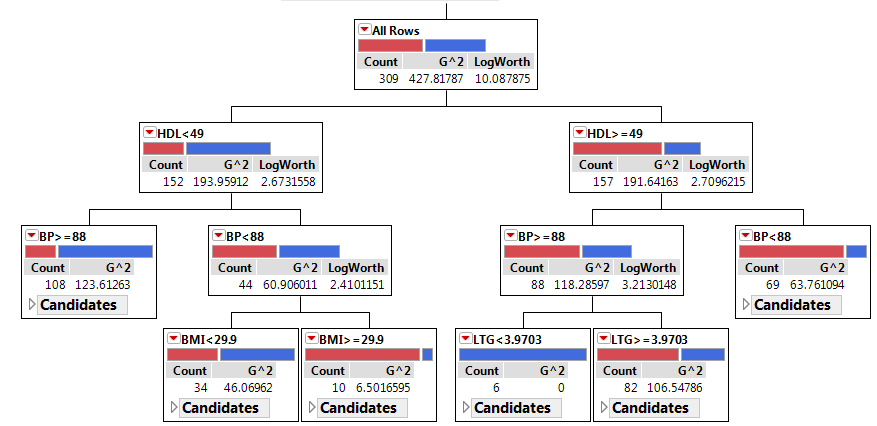Publication date: 04/28/2021
Partition Models
Use Decision Trees to Explore and Model Your Data
The Partition platform recursively partitions data according to a relationship between the predictors and response values, creating a decision tree. The partition algorithm searches all possible splits of predictors to best predict the response. These splits (or partitions) of the data are done recursively to form a tree of decision rules. The splits continue until the desired fit is reached. The partition algorithm chooses optimum splits from a large number of possible splits, making it a powerful modeling, and data discovery tool.
Figure 4.1 Example of a Decision Tree
Contents
Overview of the Partition Platform
Example of the Partition Platform
Launch the Partition Platform
The Partition Report
Control Buttons
Report for Categorical Responses
Report for Continuous Responses
Partition Platform Options
Show Fit Details
Specify Profit Matrix
Decision Matrix Report
Informative Missing
Actual by Predicted Plot
ROC Curve
Lift Curve
Node Options
Validation
K-Fold Crossvalidation
Additional Examples of Partitioning
Example of a Continuous Response
Example of Informative Missing
Example of Profit Matrix and Decision Matrix Report
Statistical Details for the Partition Platform
Responses and Factors
Splitting Criterion
Predicted Probabilities in Decision Tree and Bootstrap Forest
Want more information? Have questions? Get answers in the JMP User Community (community.jmp.com).
